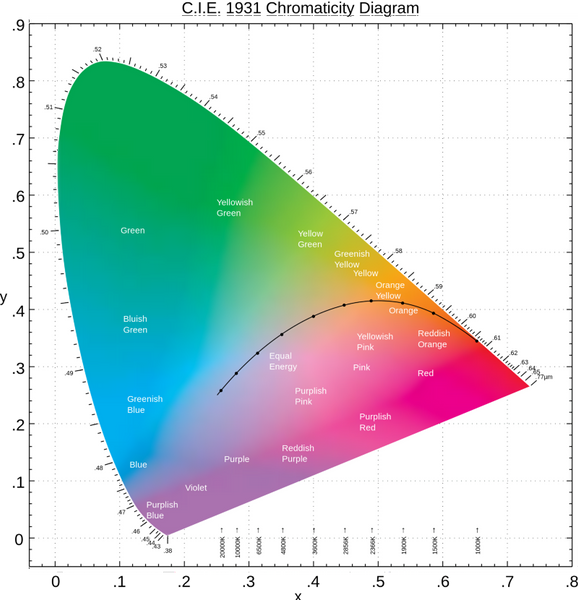Understanding CIE1931 and CIE 1976
CIE 1931
The CIE 1931 were created by the International Commission on Illumination (CIE) in 1931. And this is the first time human created an explanation between distributions of wavelengths in the visible spectrum, and colors can be perceived in human color vision. The mathematical relationships that define these color spaces are essential tools for color management, important when dealing with color comparison, illuminated displays, and digital cameras.
Now days The CIE 1931 color spaces are still widely used, same as the 1976 CIELUV color space.

Tristimulus values
William David Wright and John Guild have done a series experiments in the late 1920s. They have found the human eye has three different types of color cones and that every color is a mixture of those three types of cones, which roughly reflect the three different colors which are red, green and blue. These cone cells having peaks of spectral sensitivity in short (wavelength from 420 nm – 440 nm), middle (wavelength from 530 nm – 540 nm), and long (wavelength from 560 nm – 580 nm) wavelengths. These 3 wavelengths roughly reflect the three different colors red, green and blue. These 3 parameters corresponding to levels of stimulus of the 3 kinds of cone cells, it can describe any color that human sensate. The observer (also called CIE standard observer) observed not every color could be matched and sometimes some red had to be added to the test color to get a correct match. This was also happened at the mathematical equations and resulted in a red curve which including negative values. These three curves were standardized and are called the CIE RGB color matching functions r, g and b. The negative number is very hard for people to understand so in order to solve it , the commission based on the CIE RGB to create a new functions and it called x, y and z . The new CIE XYZ color space is everywhere greater or equipment to zero. This new color space is also known as CIE 1931 color space. This CIE XYZ color space was created to describe all visible colors which can be observed by human eyes and can be shown as a three dimensional cube .
The three dimension objects is very hard to understand to so a two dimension object must to be created .The Y of the tristimulus values is a measure of the brightness .
CIE1976
However, people have observed that the biggest issue with CIE 1931 is the uniformity with chromaticity, the three dimension color space in rectangular coordinates is not visually uniformed. Therefore the CIE 1976 was invented to fix that .The CIE 1976 (also called CIELUV) was created by the CIE in 1976. It was put forward in an attempt to provide a more uniform color spacing than CIE 1931 for colors at approximately the same luminance. The values of u’ and v’ can be calculated from the CIE 1931 tristimulus values XYZ or from the chromaticity coordinates xy according to the following formulas:

Where X, Y, Z are the Tristimulus values in the CIE 1931 systems, and x, y are the chromaticity coordinates.

Chromaticity Coordinate
Chromaticity coordinates are the best estimate of color gamut and LED suitability for a particular display since color differences will be noticeable between two neighboring modules.
The CIE XYZ tristimulus do not correspond well to the visual sense of a color. The Y from CIE XYZ is the only one easy to observer because the Y related to the brightness. In order to create a more understandable color system, the CIE released CIE chromaticity coordinate x, y and z. These three values are calculate from CIE XYZ. The value Yxy are often read as CIE chromaticity coordinate since the Y provides a brightness function. The sum of x, y and z is 1. On any of the chromaticity diagram, x means the horizontal axis and y is the vertical axis.
Converting the XYZ to chromaticity coordinate:

